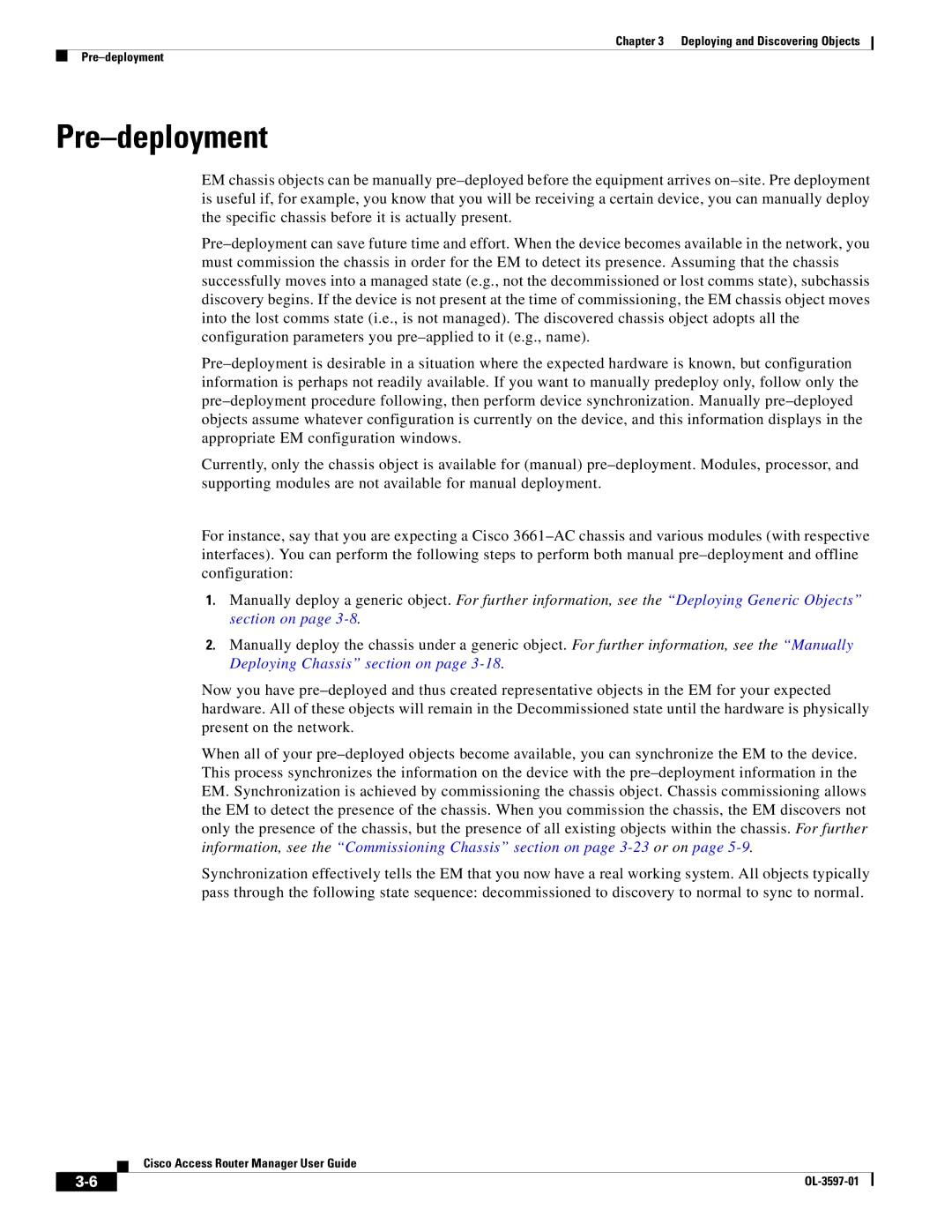Chapter 3 Deploying and Discovering Objects
Pre–deployment
Pre–deployment
EM chassis objects can be manually pre–deployed before the equipment arrives on–site. Pre deployment is useful if, for example, you know that you will be receiving a certain device, you can manually deploy the specific chassis before it is actually present.
Pre–deployment can save future time and effort. When the device becomes available in the network, you must commission the chassis in order for the EM to detect its presence. Assuming that the chassis successfully moves into a managed state (e.g., not the decommissioned or lost comms state), subchassis discovery begins. If the device is not present at the time of commissioning, the EM chassis object moves into the lost comms state (i.e., is not managed). The discovered chassis object adopts all the configuration parameters you pre–applied to it (e.g., name).
Pre–deployment is desirable in a situation where the expected hardware is known, but configuration information is perhaps not readily available. If you want to manually predeploy only, follow only the pre–deployment procedure following, then perform device synchronization. Manually pre–deployed objects assume whatever configuration is currently on the device, and this information displays in the appropriate EM configuration windows.
Currently, only the chassis object is available for (manual) pre–deployment. Modules, processor, and supporting modules are not available for manual deployment.
For instance, say that you are expecting a Cisco 3661–AC chassis and various modules (with respective interfaces). You can perform the following steps to perform both manual pre–deployment and offline configuration:
1.Manually deploy a generic object. For further information, see the “Deploying Generic Objects” section on page 3-8.
2.Manually deploy the chassis under a generic object. For further information, see the “Manually Deploying Chassis” section on page 3-18.
Now you have pre–deployed and thus created representative objects in the EM for your expected hardware. All of these objects will remain in the Decommissioned state until the hardware is physically present on the network.
When all of your pre–deployed objects become available, you can synchronize the EM to the device. This process synchronizes the information on the device with the pre–deployment information in the EM. Synchronization is achieved by commissioning the chassis object. Chassis commissioning allows the EM to detect the presence of the chassis. When you commission the chassis, the EM discovers not only the presence of the chassis, but the presence of all existing objects within the chassis. For further information, see the “Commissioning Chassis” section on page 3-23or on page 5-9.
Synchronization effectively tells the EM that you now have a real working system. All objects typically pass through the following state sequence: decommissioned to discovery to normal to sync to normal.
Cisco Access Router Manager User Guide

